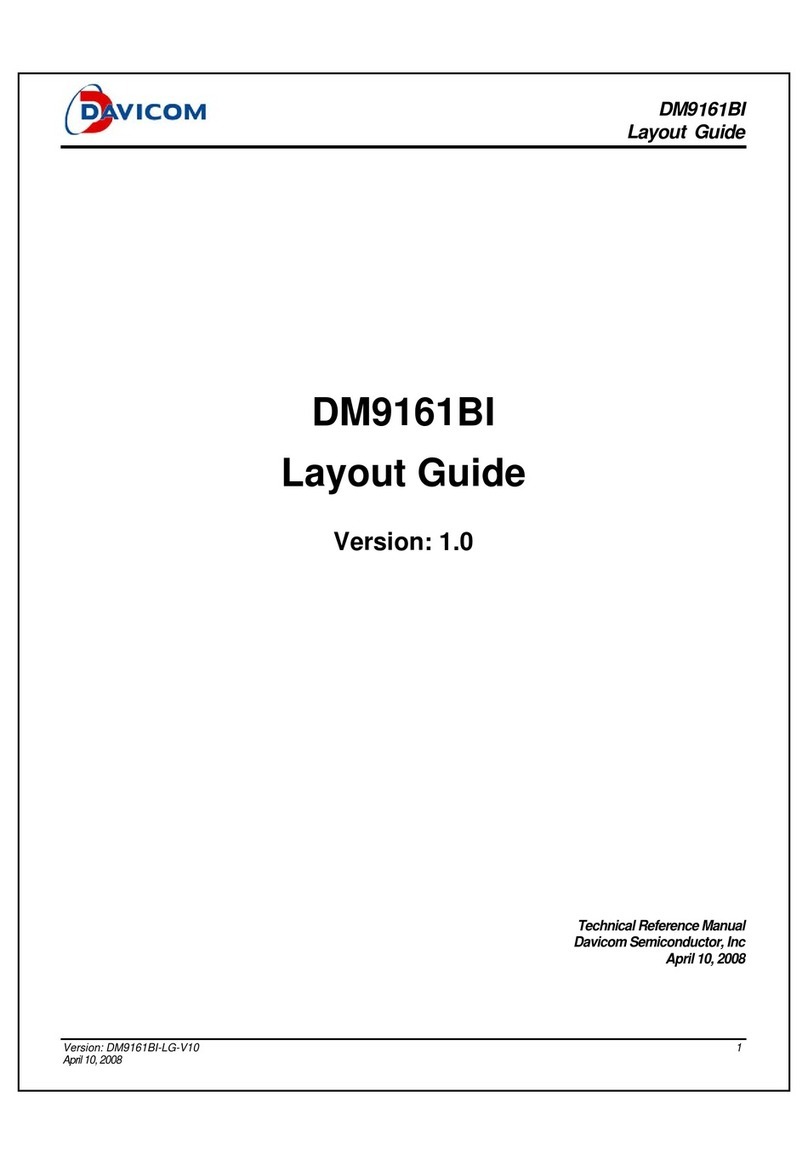DM9163
Layout Guide
Version: DM9163-LG-V10 5
May 5, 2014
2. Power Supply Decoupling Capacitors
•Place all the decoupling capacitors for all power supply pins as close as possible to the power pads of the
DM9163 (no more than 2.5mm from the above mentioned pins). The recommended decoupling capacitor is
0.1μF or 0.01μF.
•The PCB layout and power supply decoupling should provide sufficient decoupling to achieve the following
when measured at the device:
(1) All DVDDs and AVDDs should be within 50mV peak to peak of each other,
(2) All DGNDs and AGNDs should be within 50mV peak to peak of each other.
(3) The resultant AC noise voltage measured across each DVDD/DGND set and AVDD/AGND set should be
less than 100mV peak to peak.
•The 0.1-0.01μF decoupling capacitor should be connected between each DVDD/DGND set and
AVDD/AGND set and be placed as close as possible to the power pins of DM9163. The conservative
approach is to use two decoupling capacitors on each DVDD/DGND set and AVDD/AGND set. One 0.1μF is
for low frequency noise, and the other 0.01μF is for high frequency noise on the power supply.
•The 3.3V connection to the transmit center tap of the magnetic has to be well decoupled to minimize
common mode noise injection from the power supply into the twisted pair cable. It is recommended that a
0.01μF decoupling capacitor should be placed between the center tap 3.3V to AGND ground plane. This
decoupling capacitor should be placed as close as possible to the center tap of the magnetic.10 uF or 47 uF
Capacitor should be connected between each 3.3V and AGND.
Figure 2
DM9163





























